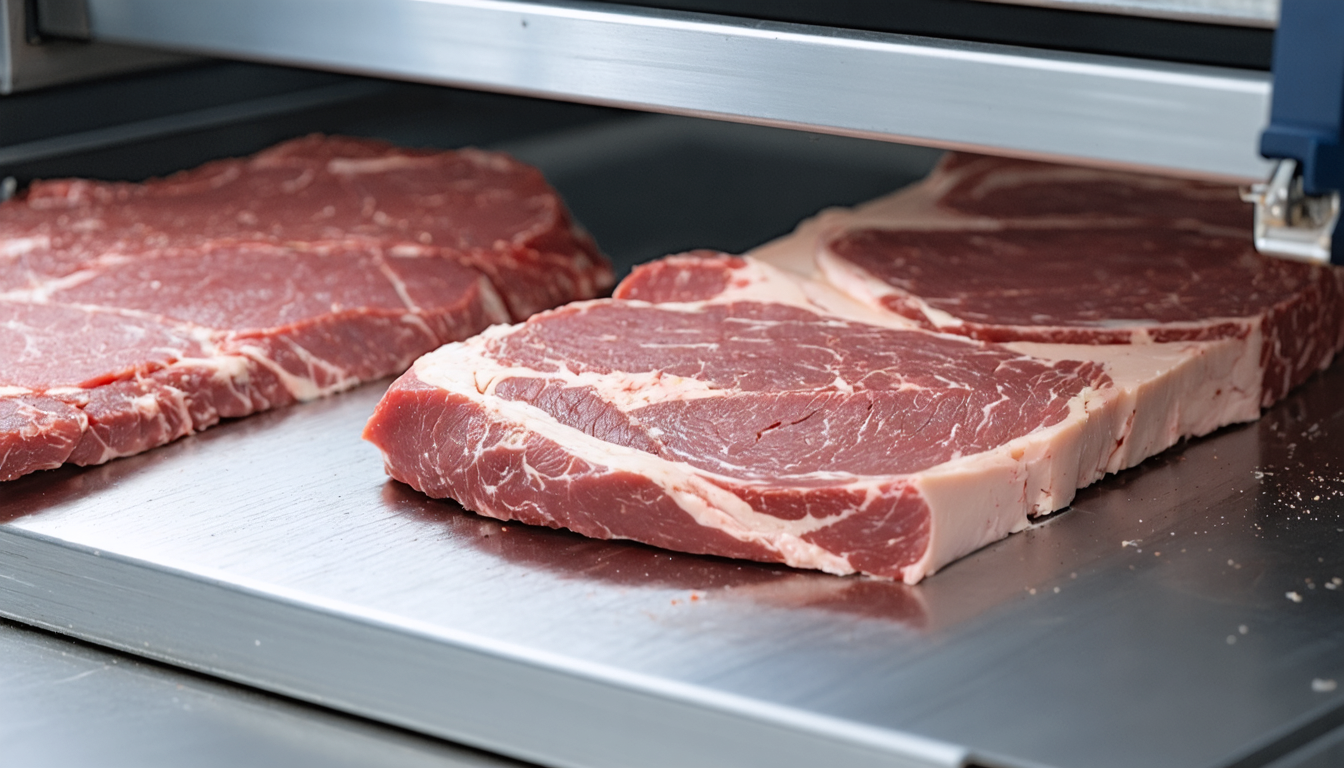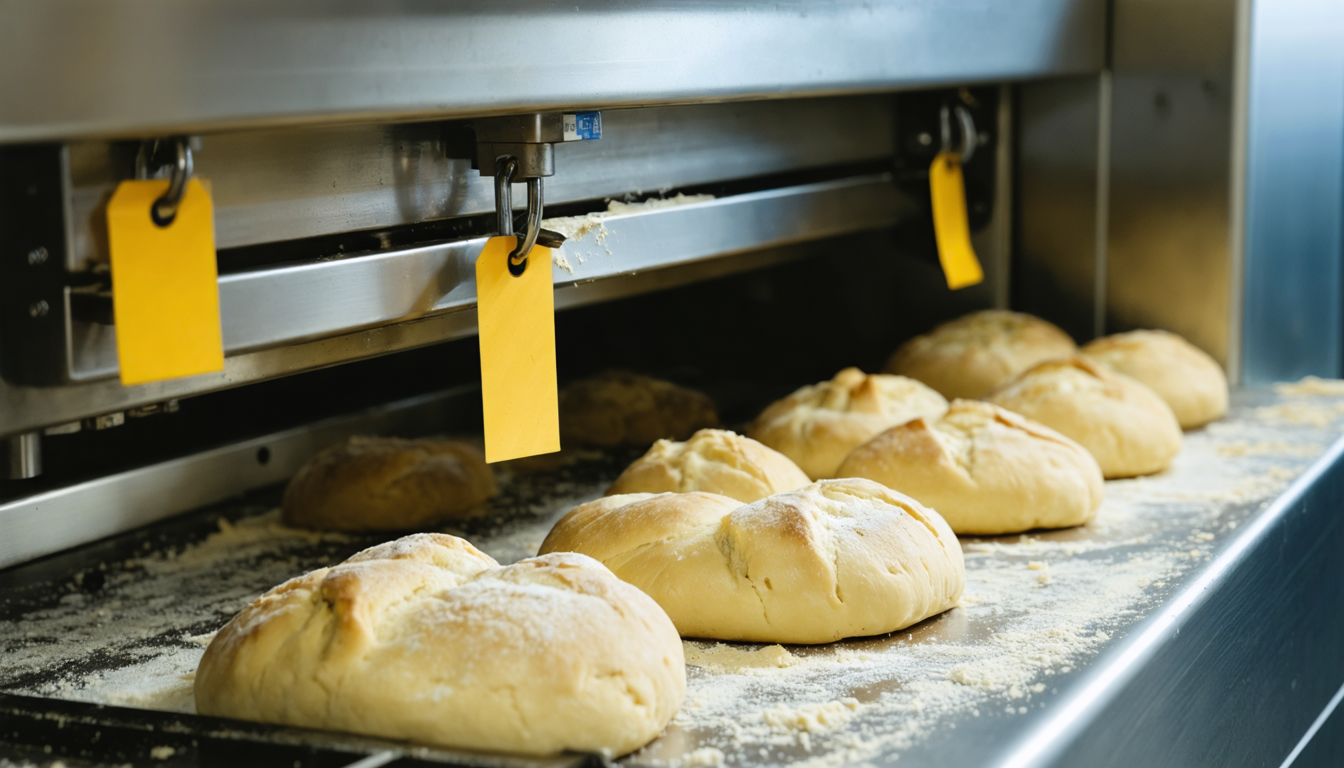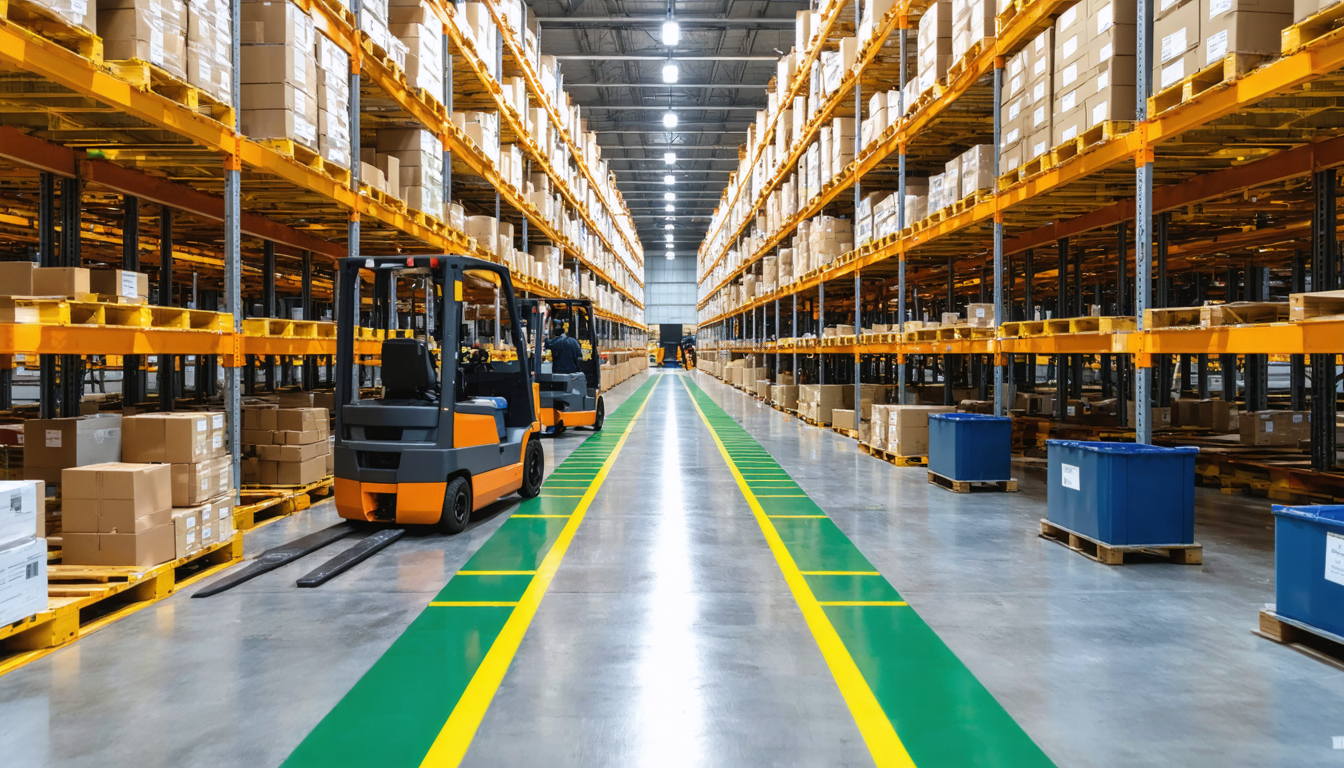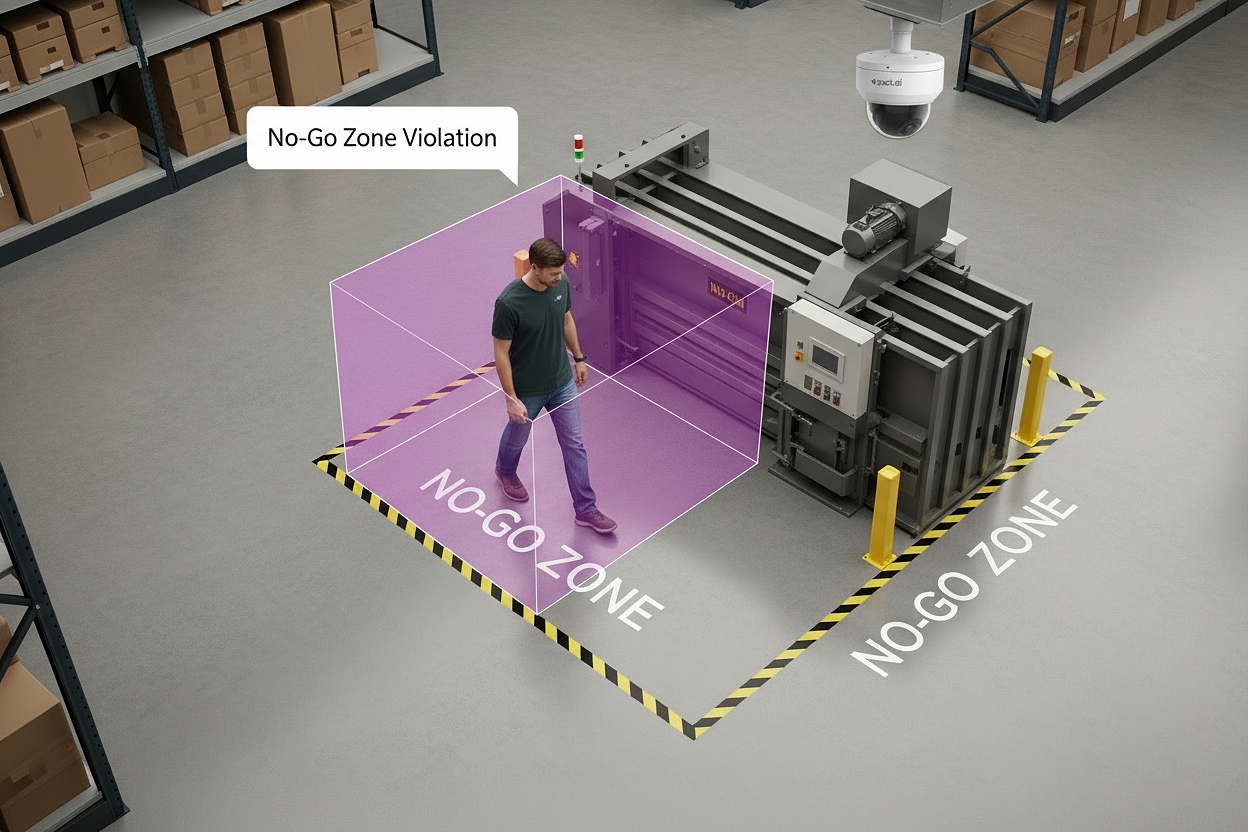Machine-related injuries in the U.S. retail sector lead to substantial direct expenses, including medical bills, workers’ compensation, and legal fees. Retail environments, from grocery stores to warehouse clubs, depend on a blend of people and machines to move products, slice meats, and keep shelves stocked. When the right safety protocols aren’t in place—or aren’t consistently followed—the risk of serious incidents rises. The good news? Most machine-related injuries can be mitigated through a smart mix of training, strong safeguards, and technology that aids in keeping everyone accountable and alert. In this guide, we’ll break down the true costs, root causes, and provide a clear framework for moving from a reactive to a forward-looking safety model in retail using modern technology—including video AI.
Why machine-related injuries are a major risk for retailers
Machine-related accidents hit retail budgets and operations hard. Here’s why:
-
Direct Medical and Legal Costs: A single disabling forklift injury can be costly, creating a major financial impact on annual budgets. Amputation injuries, in particular, often involve complex medical care and workers’ compensation claims.
-
Operational Disruption: When a key piece of equipment is involved in an incident, it’s not just the injured worker who’s affected. Lines back up, shelves go unstocked, and productivity drops.
-
Compliance and Fines: OSHA penalties for machine safety violations can be substantial, sometimes reaching five or even six figures for serious or repeated offenses. These fines add a direct financial consequence to safety lapses.
-
Reputation and Retention: Consistent injuries erode trust—both among employees and the public. High turnover from unsafe conditions drives up hiring and training costs, especially with seasonal staff.
The top 5 causes of machine-related injuries in retail—and how to guard against them
Understanding why these injuries happen is the first step to addressing them. Here are the five leading causes in retail, practical strategies to guard against them, and how video AI can assist safety teams to stay ahead.
1. Inadequate Machine Guarding

The Hazard:
Picture a busy supermarket meat department. A seasoned butcher is using a band saw to cut steaks. The adjustable blade guard sits too high—meant to speed up the work. Suddenly, the worker’s finger slips, contacting the blade. This isn’t rare. Most machine-related injuries in retail involve fingers and hands, often when guards are missing or improperly set.
Conventional Safeguards:
-
Physical machine guards installed on slicers, saws, and presses.
-
Mandatory checks to ensure guards are in place before operation.
-
Written SOPs and visual reminders for proper guard adjustment.
How video AI amplifies safety:
Video AI systems can monitor workstations to help verify safety protocols are followed. If an unsafe action occurs near the machine, analytics can flag the event, alerting managers to a potential compliance issue. Reviewing flagged footage enables teams to identify individuals who may need additional coaching and coach for compliance.
2. Lapses in Lockout/Tagout (LOTO) During Maintenance and Cleaning

The Hazard:
Early morning in a bakery. An employee reaches inside a dough machine to clear a jam, forgetting to lock out the power. The machine’s mechanism suddenly starts, catching her hand and causing an injury. OSHA data shows that many retail injuries occur during cleaning or maintenance—when workers skip LOTO protocols.
Established Protocols:
-
Written LOTO procedures and required training for authorized employees.
-
Physical locks and tags for energy isolation.
-
Regular supervisor audits during cleaning and maintenance shifts.
How video AI amplifies safety:
Video AI can detect when people enter restricted machine areas during off-hours or perform maintenance without proper safety steps. Real-time alerts and incident review tools support faster investigations and reinforce LOTO adherence.
3. Improper Use of Personal Protective Equipment (PPE)
The Hazard:
A grocery store worker is assigned to operate a meat slicer but skips the cut-resistant gloves because “they’re uncomfortable.” Minutes later, a slip leads to a laceration. PPE lapses are a recurring theme in retail, especially in food prep and maintenance.
Standard Practices:
-
Stocking appropriate PPE (cut-resistant gloves, safety glasses) for all machine operators.
-
Training on when and how to use PPE.
-
Supervisors visually checking for PPE during shift changes.
How video AI amplifies safety:
In environments where specific PPE like safety vests are required, video AI systems can spot missing items, flagging non-compliance for timely intervention. Over time, analytics assist in pinpointing which areas or shifts see the most PPE violations, informing targeted training or process tweaks.
4. Unsafe Behaviors: Rushing, Distraction, and Bypassing Protocols

The Hazard:
During a busy shift, a stocker operating a motorized pallet jack rushes down an aisle, skipping the required check for pedestrians at an intersection. Elsewhere, an experienced butcher bypasses the pusher plate on a slicer to move faster. These shortcuts can lead to collisions or direct contact with moving parts—risking serious injuries.
Conventional Methods:
-
Safety signage and reminders about safe speeds and process steps.
-
Supervisor observation and correction of unsafe habits.
How video AI amplifies safety:
Video AI can detect running, unsafe speeds, or unauthorized entry into machine zones. Events like vehicles failing to stop at intersections are flagged, allowing teams to review and intervene before an incident escalates. This monitoring creates accountability, making it harder for unsafe habits to slip through the cracks.
5. Poor Equipment Maintenance and Inspection
The Hazard:
A retail store’s conveyor system jams repeatedly. Instead of reporting the issue, workers “make do” with quick fixes. Eventually, a worn belt snaps, striking an employee’s hand. Poor maintenance contributes to injuries—especially when guards, emergency stops, or sensors fail.
Established Safeguards:
-
Scheduled proactive maintenance and documented inspections.
-
Prompt repairs for any reported issues.
-
Routine supervisor walk-throughs to spot hazards.
How video AI amplifies safety:
Video AI tools flag “unattended workstation” or “equipment absent” events, aiding managers in spotting breakdowns or maintenance lapses faster. Reviewing incident trends over time helps prioritize repairs and minimize the recurrence of issues.
Integrating a video AI system: from NVR to insights in retail
Modern safety technology doesn’t require a rip-and-replace of your current system. Today’s AI camera platforms are built to work with your existing cameras—whether they’re legacy analog models or modern POE devices. Here’s how this approach is different:
|
Feature |
Traditional NVR |
Cloud Video AI Platform |
|---|---|---|
|
Camera Compatibility |
Limited, often proprietary |
Works with existing cameras (including POE and analog) |
|
Storage |
On-premise hardware |
Secure, cloud-native, scalable |
|
Maintenance |
Frequent, manual |
Minimal, remote updates |
|
User Access |
Limited seats |
Unlimited users, unified dashboard |
|
Video Review |
Manual, slow |
AI-powered search and event detection |
|
Actionable Insights |
Passive footage |
Alerts for no-go zone entry, missing PPE, and other unsafe behaviors |
A cloud-based AI system bridges your current cameras to a secure, cloud-native dashboard. This eliminates the need for bulky on-prem servers and lets you scale storage as your needs grow. More importantly, the AI layer surfaces specific events—flagging missing PPE, no-go zone violations, and more—so your team can act before small hazards turn into major incidents.
Practical Integration Tips:
-
Camera Compatibility: Confirm your solution works with both modern and legacy camera feeds—no need to rip out what works.
-
Unlimited Users: Look for platforms that let your whole safety, operations, and IT teams access data and alerts—improving collaboration between teams.
-
Real-time alerts: Prioritize real-time event detection for critical risks like vehicles in no-go zones, running in warehouse aisles, or missing PPE.
-
Cloud Storage: Choose scalable, cloud-native storage to lessen maintenance, aid in ensuring video is accessible, and streamline investigations.
-
Seamless Integration: Align technology upgrades with your safety policies, incident reporting, and OSHA compliance—so you’re building on what works, not starting from scratch.
Transform retail safety—book a safety consultation
Every machine-related injury is a chance to learn and improve. By integrating video AI with proven safety protocols, retail teams can cut risk, speed up investigations, and create a safer environment for every employee. Technology acts as a powerful support tool for your people, helping your team move from reactive clean-up to anticipatory risk reduction.
See how Spot AI’s video AI platform can assist your retail team in minimizing risk and improving safety. Request a product demo to experience the technology in action.
Frequently asked questions
What are the most common machine-related injuries in retail?
The majority involve fingers and hands—especially amputations and lacerations—caused by contact with moving parts on slicers, saws, conveyors, and lifts. Amputations are a serious and frequent outcome of severe machine-related incidents.
How can retailers reduce the risk of injuries during machine cleaning and maintenance?
Ensuring consistent adherence to lockout/tagout (LOTO) protocols, providing hands-on training, and using video analytics to monitor for off-hours machine access are all critical steps to lower the risk of injuries when machines are being serviced.
What’s the role of video analytics in retail safety?
Video AI platforms automatically detect unsafe actions—like people in no-go zones, PPE lapses, or running in restricted areas—and alert teams in real time. This enables timely intervention and supports a forward-thinking safety culture.
How does safety technology integrate with our existing camera system?
Video AI systems are designed to work with your current POE or analog cameras. You add a smart analysis layer—no need for a full hardware swap. Cloud-based dashboards make it easy to access footage, search incidents, and share insights across teams.
What compliance requirements to focus on for machine safety?
Key OSHA standards include proper machine guarding (Source: 29 CFR 1910.212), mandatory LOTO procedures (Source: 29 CFR 1910.147), and annual forklift operator certification (Source: 29 CFR 1910.178). Regular audits and documented training are best practice.
How can safety technology help reduce stress for safety professionals?
Automating hazard detection and incident review frees managers from manual checks, allowing them to focus on training, coaching, and strategic improvements—not just paperwork.
What features to look for in a video AI system for workplace safety?
An effective video AI platform should integrate with your existing cameras to minimize costs. Look for real-time alerts for risks like no-go zone entry, unlimited user access for collaboration, secure cloud storage, and AI-powered search to find relevant footage in minutes.
About the author
Joshua Foster is an IT Systems Engineer at Spot AI, where he focuses on designing and securing scalable enterprise networks, managing cloud-integrated infrastructure, and automating system workflows to enhance operational efficiency. He is passionate about cross-functional collaboration and takes pride in delivering robust technical solutions that empower both the Spot AI team and its customers.

























.png)
.png)
.png)